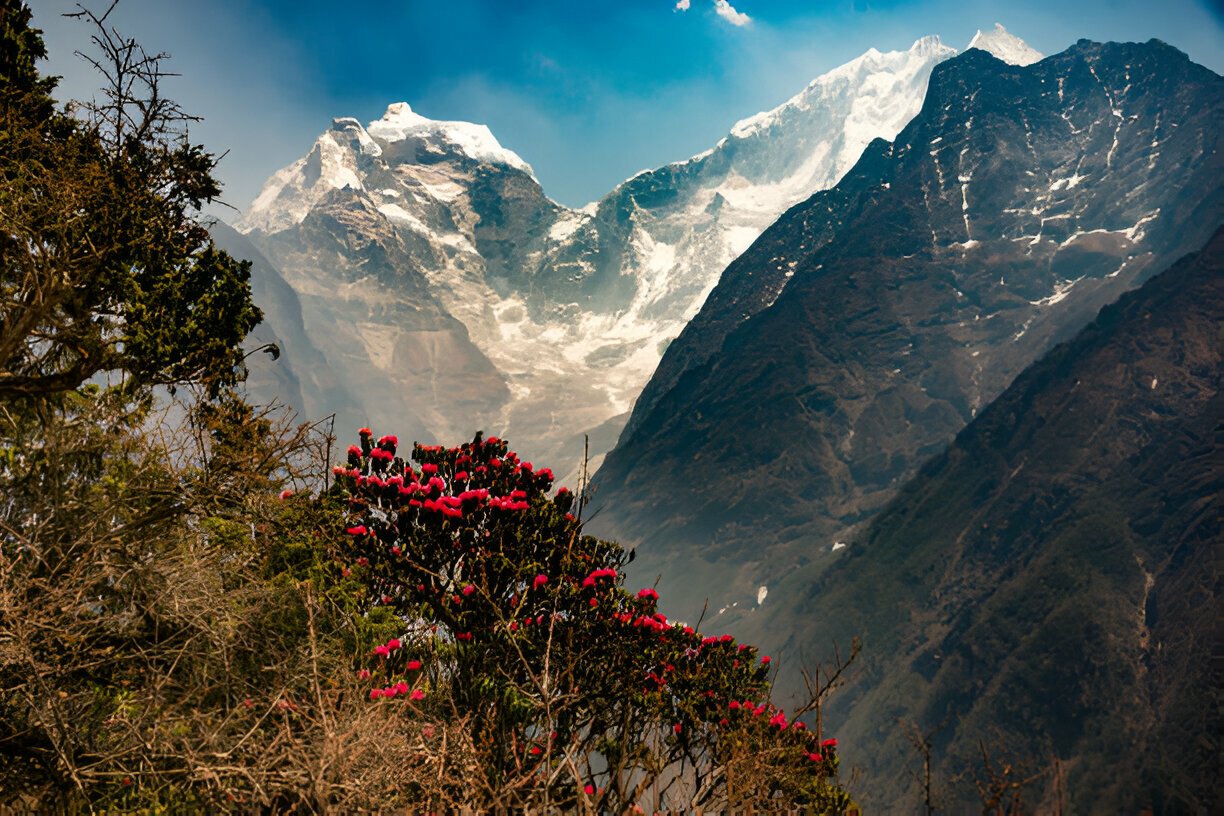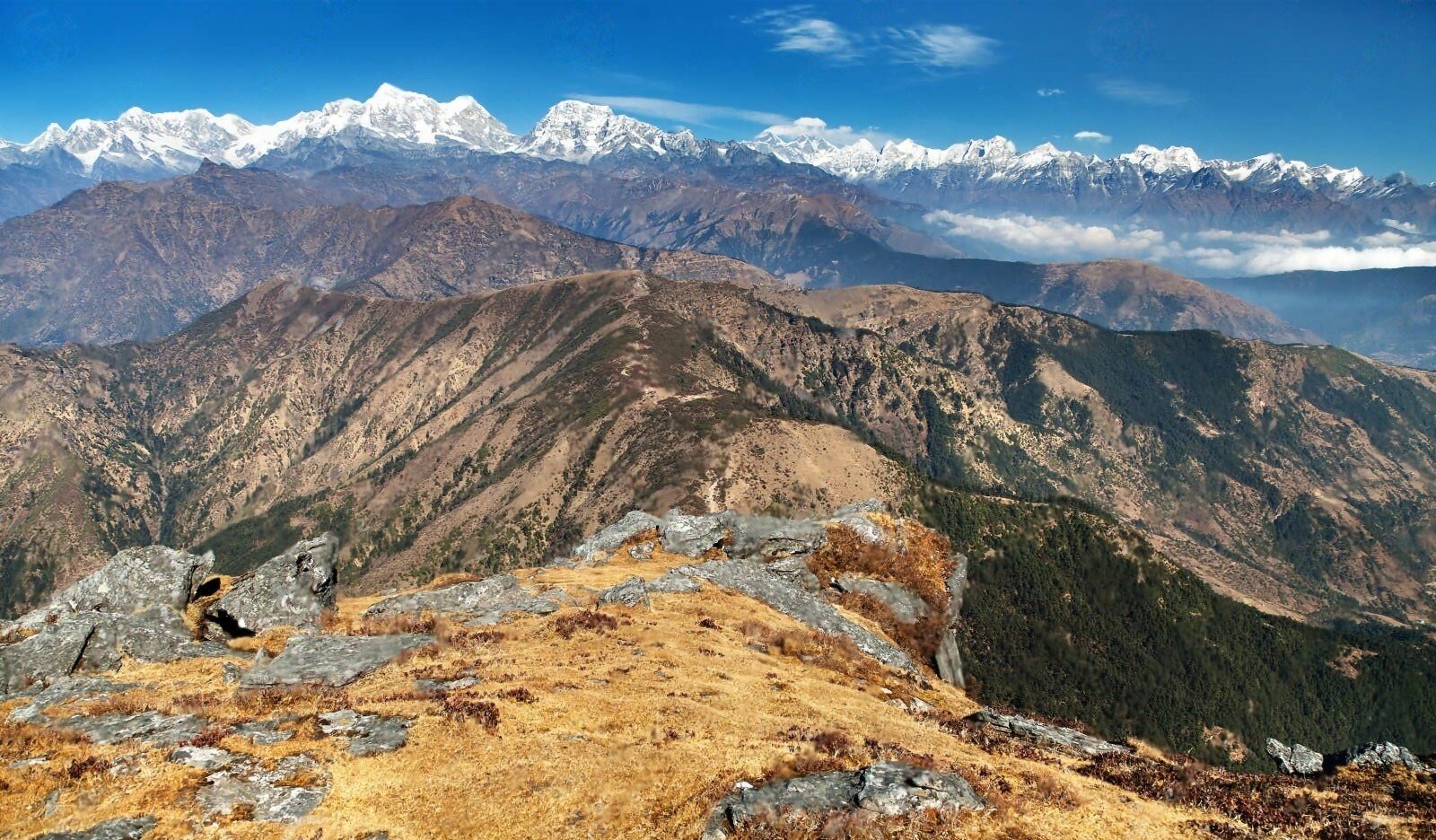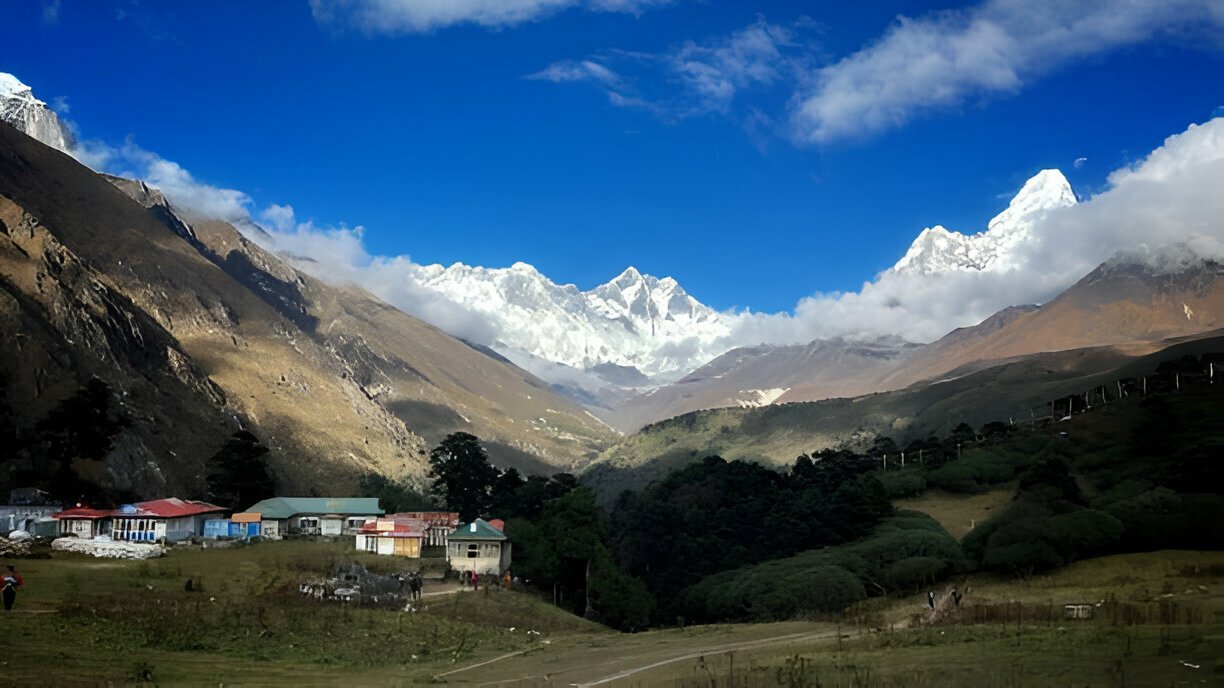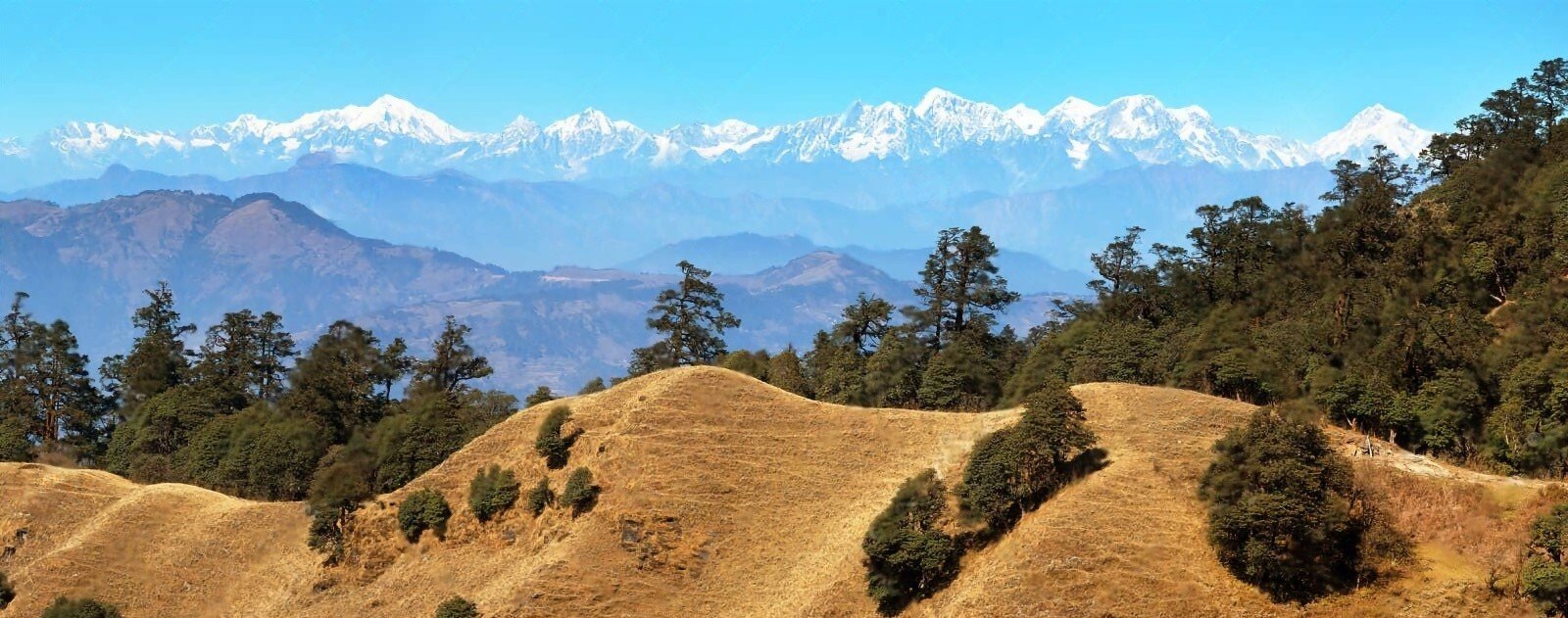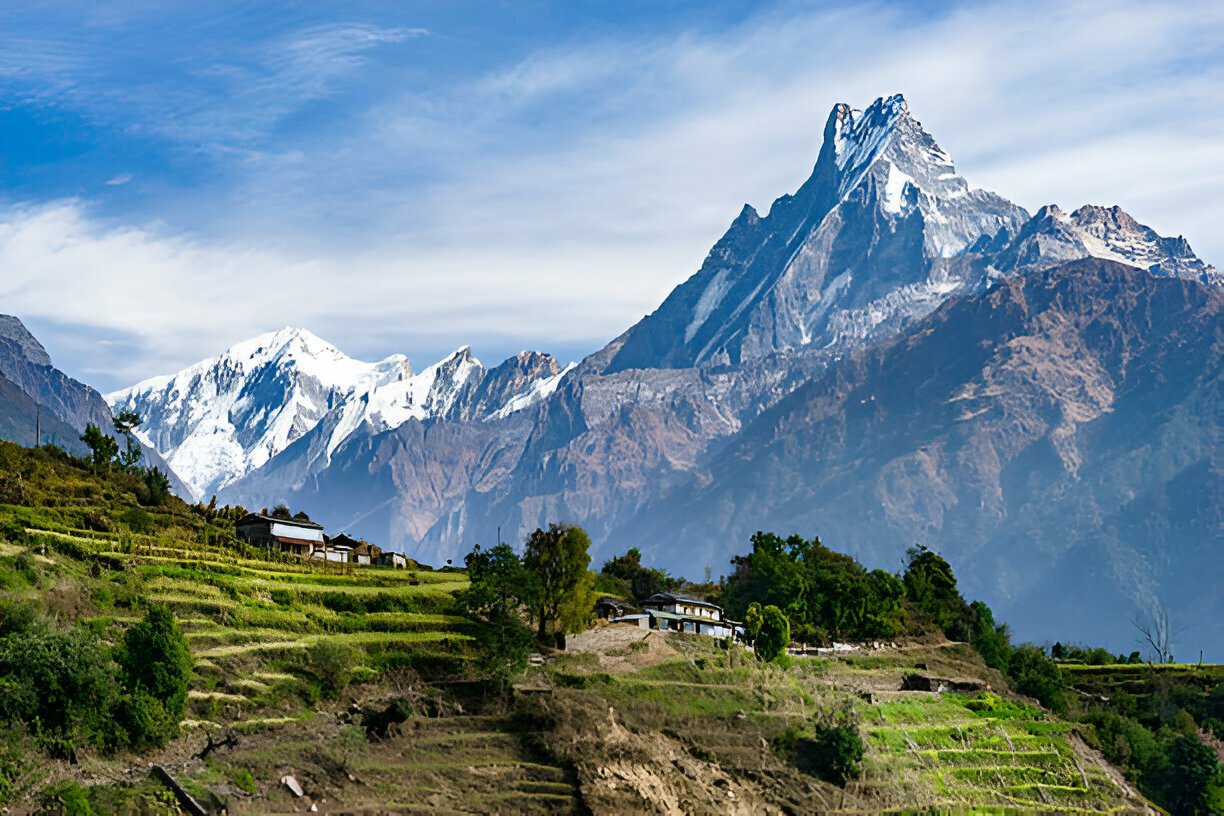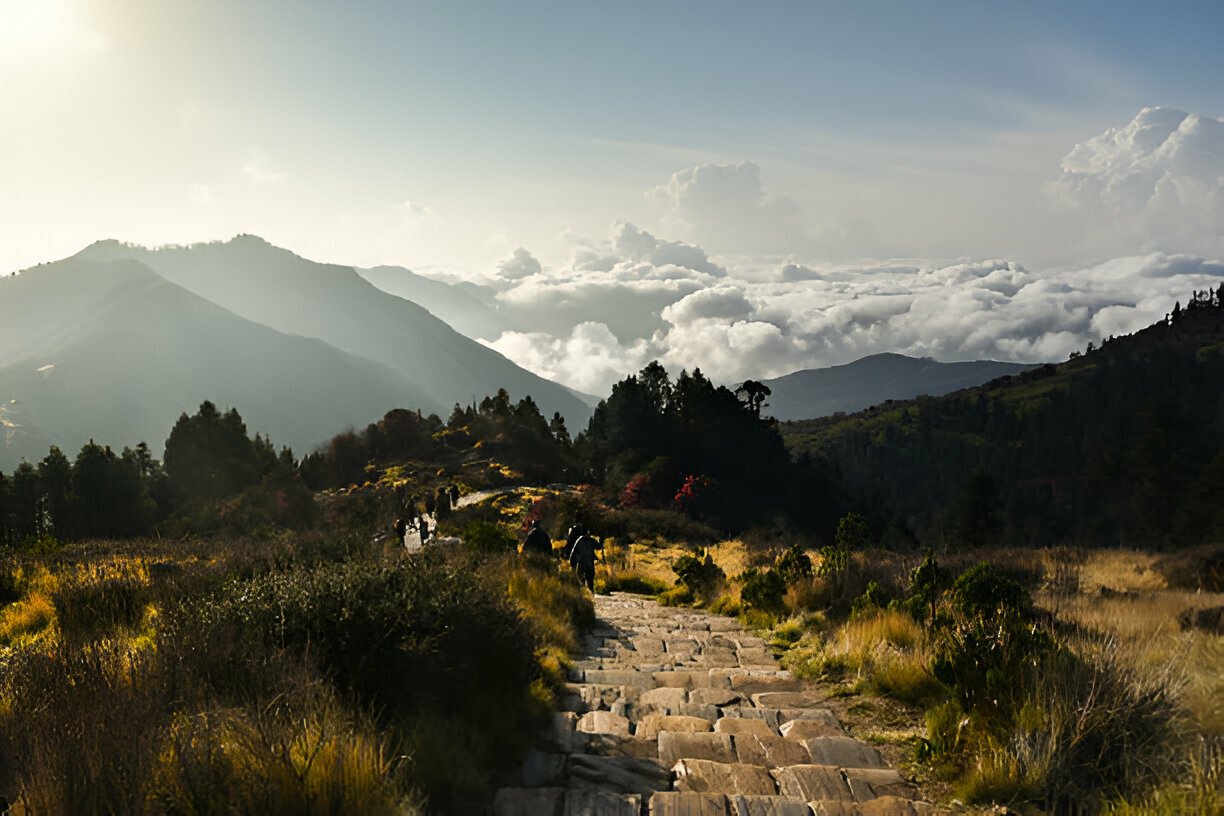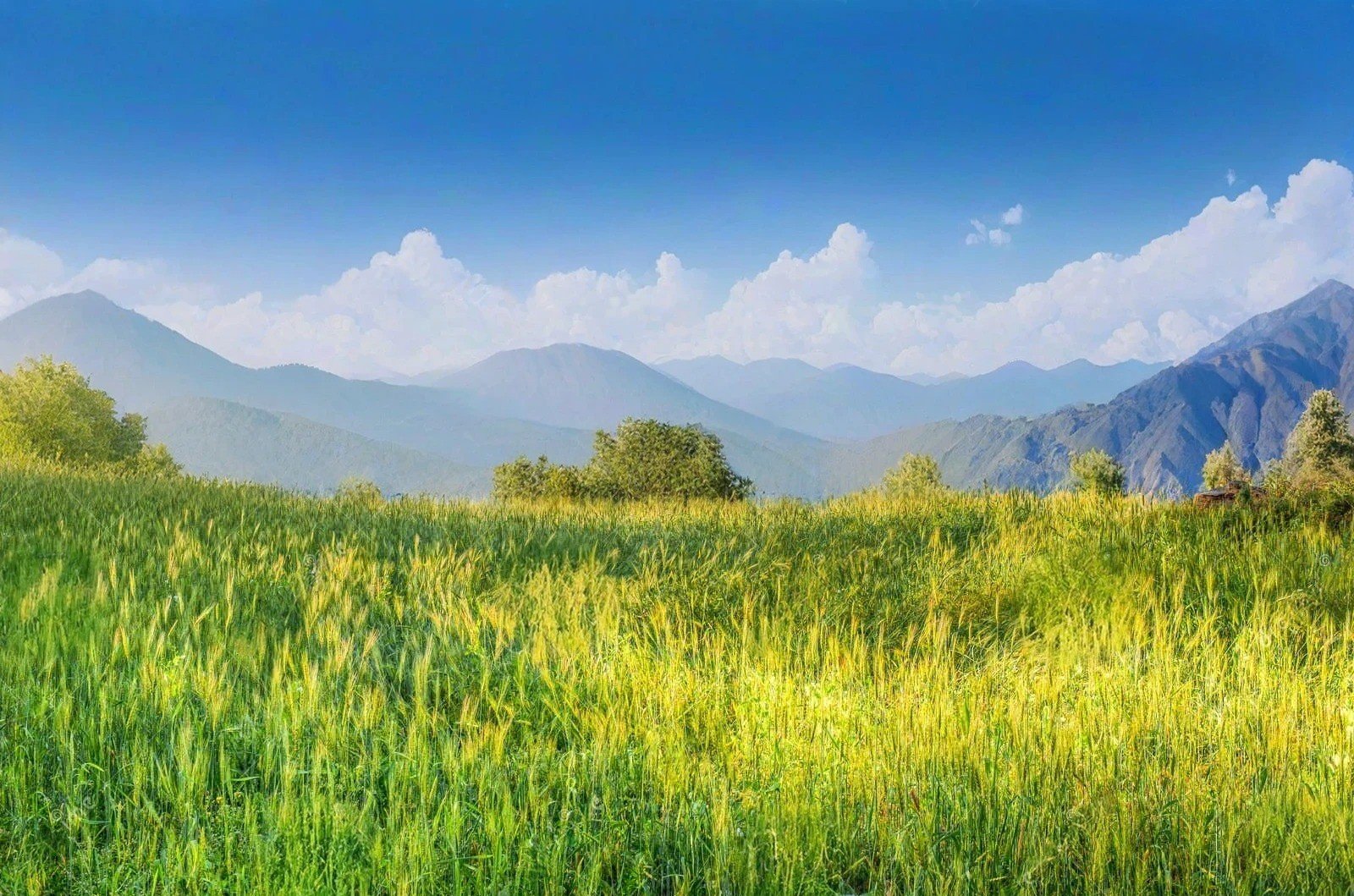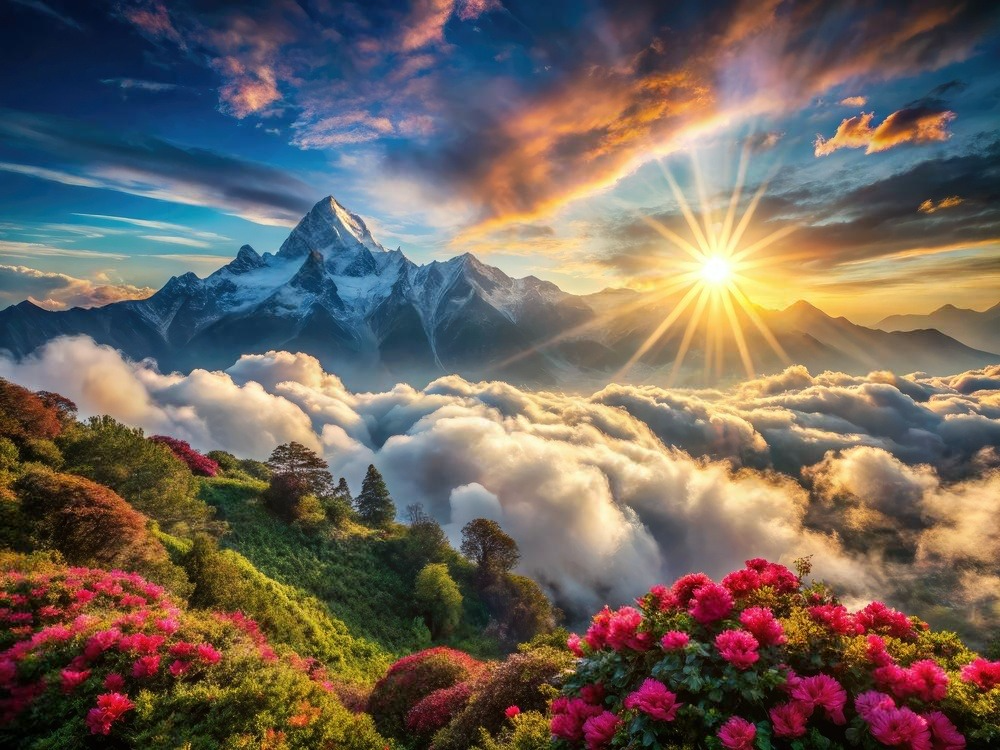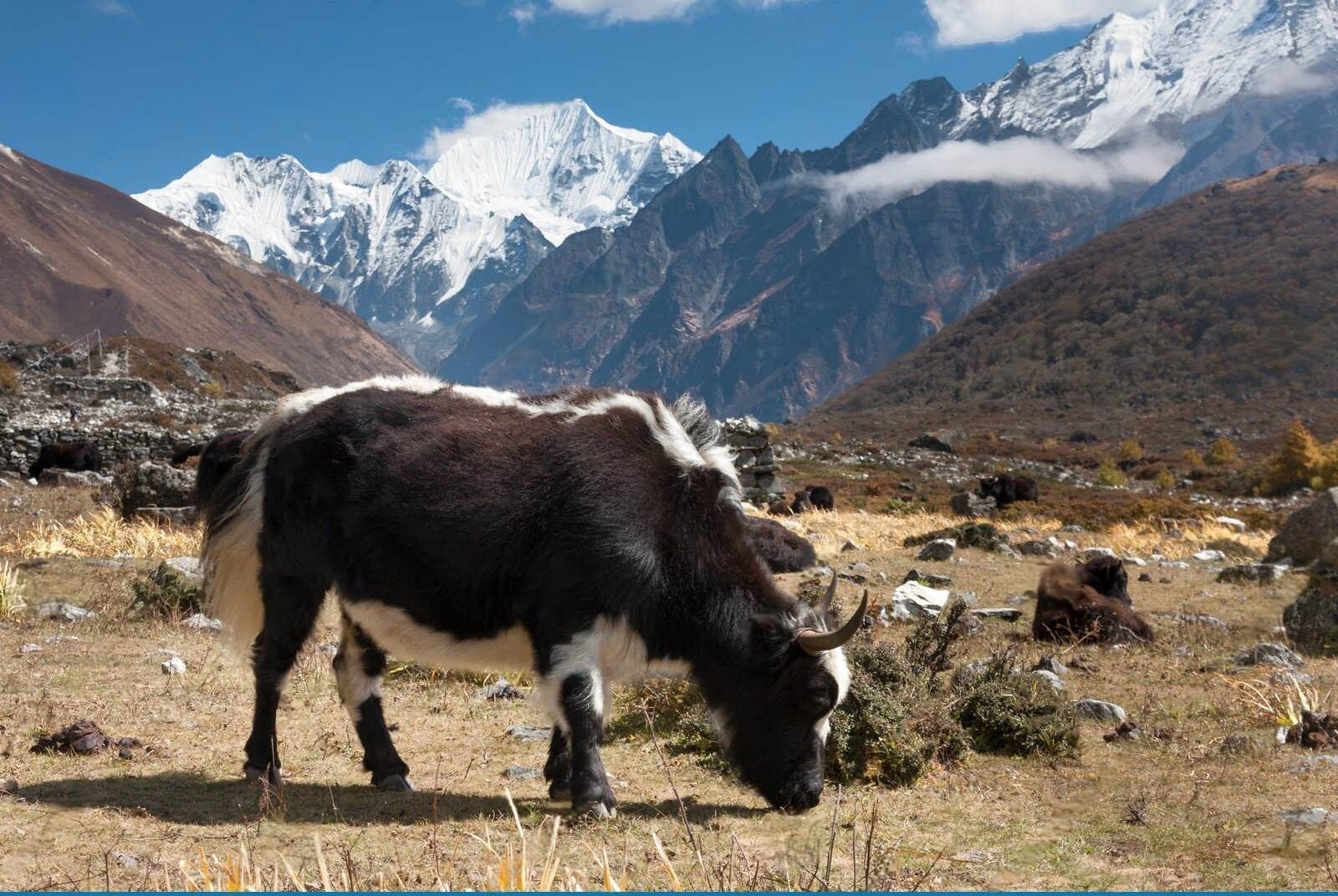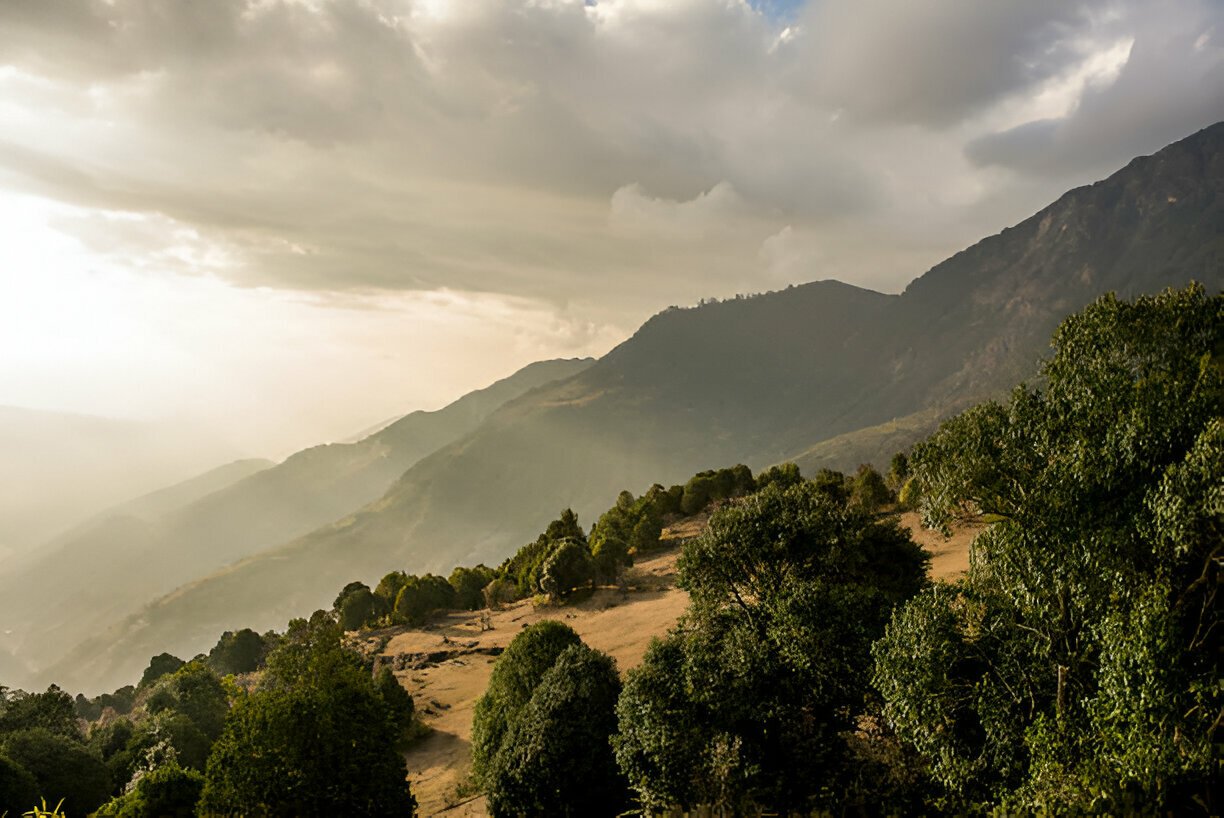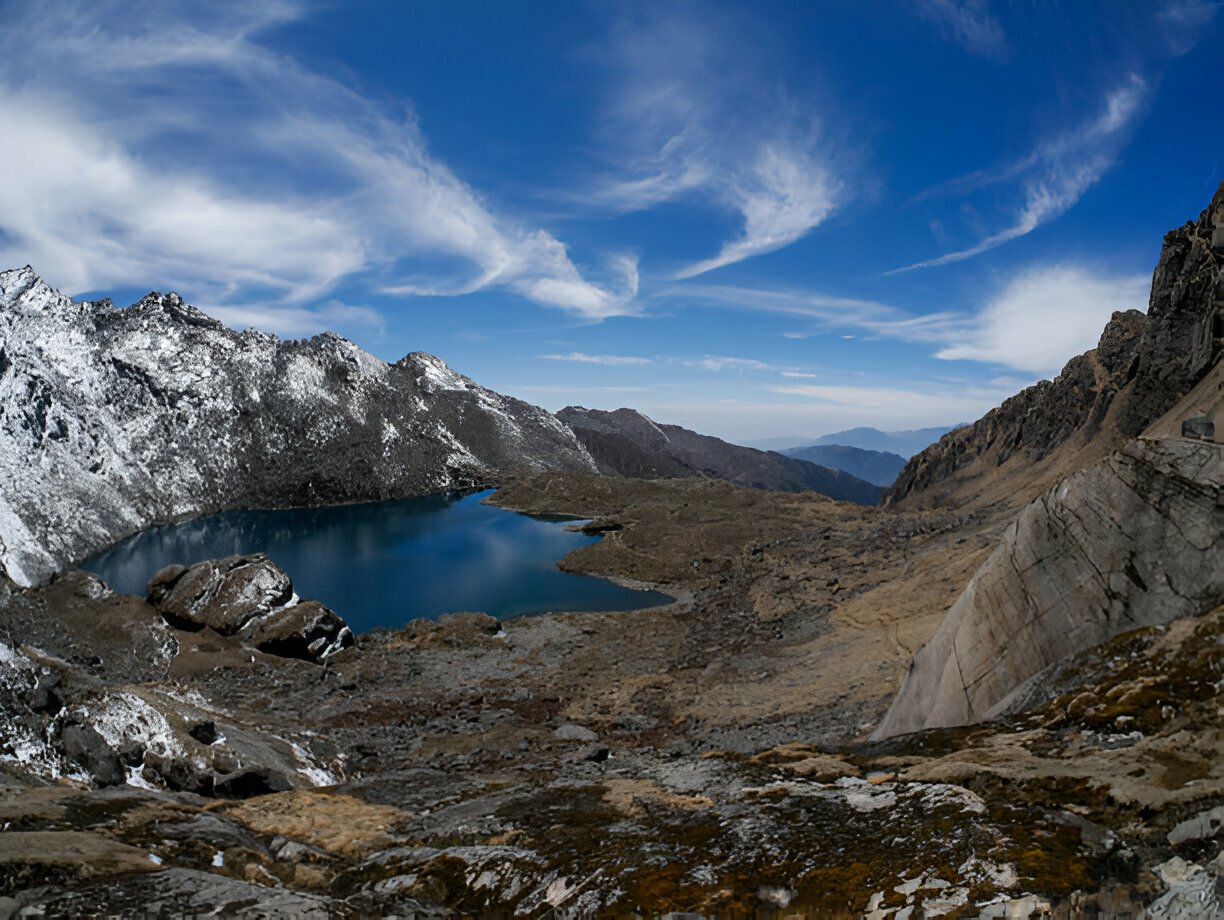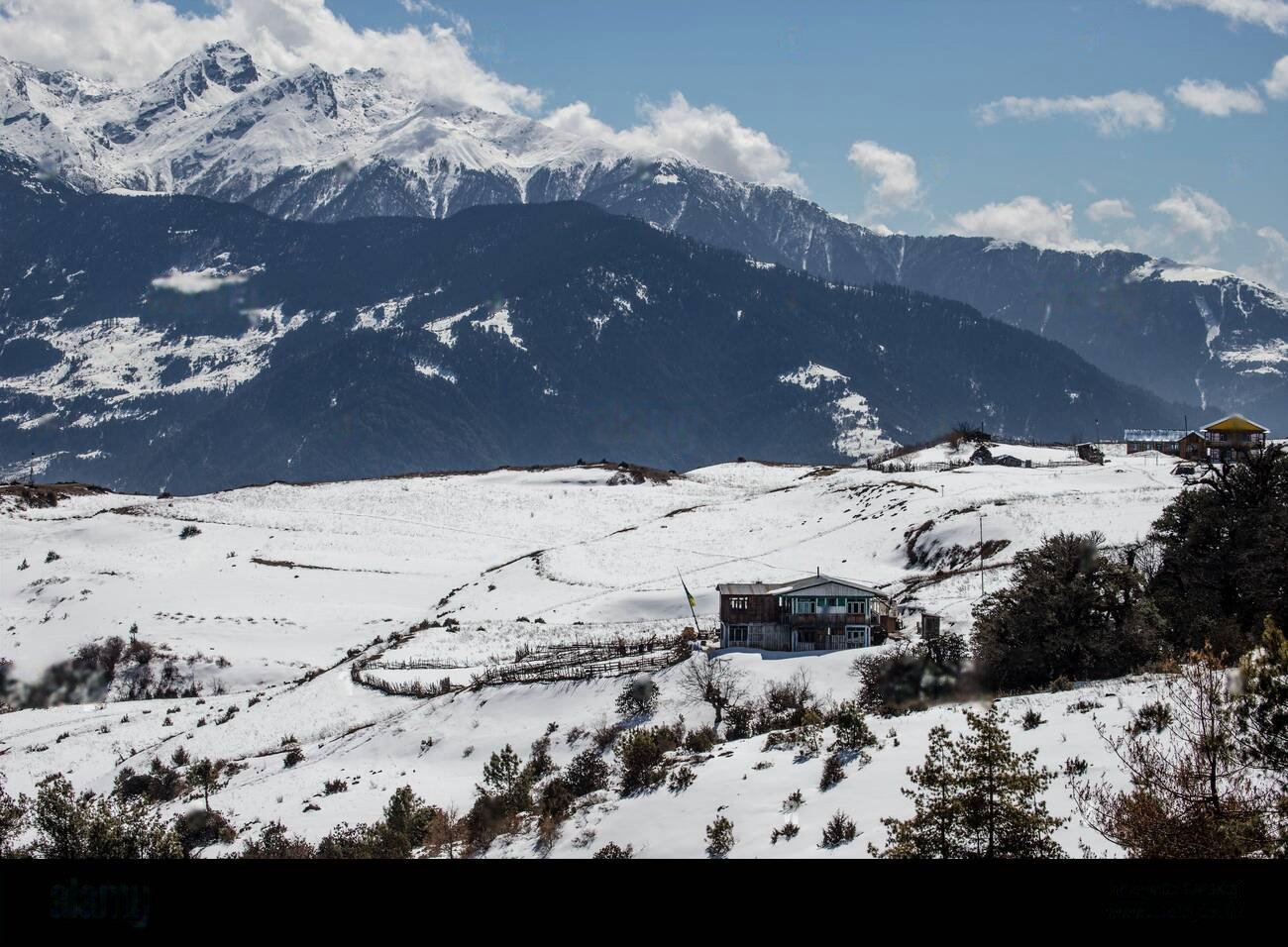 About this Trip
About this Trip
The Annapurna Base Camp Trek represents one of Nepal's most rewarding mountain journeys, offering an ideal combination of accessibility, spectacular scenery, and cultural richness. What makes this trek exceptional is its perfect balance of challenge and reward, providing access to the heart of the Himalayan giants without requiring extreme altitude endurance or technical climbing skills.
The trek follows a carefully designed route that maximizes landscape diversity while maintaining a manageable difficulty level. Beginning in the lush subtropical foothills near Pokhara, trekkers ascend through traditional farming villages and terraced fields before entering the magical rhododendron forests that bloom spectacularly in spring. As the trail climbs higher, the environment transforms dramatically, revealing panoramic mountain vistas and eventually entering the natural amphitheater of the Annapurna Sanctuary, surrounded by a 360-degree wall of towering peaks.
The cultural dimension of this trek is particularly enriching. Villages along the route are primarily inhabited by Gurung and Magar ethnic groups, known for their distinctive cultural traditions, including unique dance forms, textile arts, and architectural styles. Many communities maintain traditional livelihoods integrated with carefully developed tourism services, creating authentic cultural exchanges while preserving their heritage. Trekkers often have opportunities to visit local homes, observe traditional farming methods, and participate in community activities, fostering meaningful connections that enhance the journey.
Physically, the trek presents a satisfying challenge without being overwhelming. Daily hiking segments generally range from 5-7 hours with significant elevation gains and losses, but well-placed tea houses allow for comfortable overnight stops and gradual acclimatization. The trail infrastructure has been continuously improved, with stone steps on steeper sections and sturdy bridges across water crossings, making the route accessible to reasonably fit trekkers of various experience levels.
Perhaps most remarkably, the Annapurna Base Camp Trek creates a journey of continuously unfolding wonder. Each day reveals new perspectives, from terraced hillsides that seem to defy gravity to the sudden appearance of snow-capped peaks between forest clearings. The final approach to the base camp itself builds anticipation as the massive amphitheater of mountains gradually comes into view, culminating in an experience that many trekkers describe as spiritually moving – standing in the heart of a natural cathedral formed by some of the world's highest peaks.
The Annapurna Base Camp Trek represents one of Nepal's most rewarding mountain journeys, offering an ideal combination of accessibility, spectacular scenery, and cultural richness. What makes this trek exceptional is its perfect balance of challenge and reward, providing access to the heart of the Himalayan giants without requiring extreme altitude endurance or technical climbing skills.
The trek follows a carefully designed route that maximizes landscape diversity while maintaining a manageable difficulty level. Beginning in the lush subtropical foothills near Pokhara, trekkers ascend through traditional farming villages and terraced fields before entering the magical rhododendron forests that bloom spectacularly in spring. As the trail climbs higher, the environment transforms dramatically, revealing panoramic mountain vistas and eventually entering the natural amphitheater of the Annapurna Sanctuary, surrounded by a 360-degree wall of towering peaks.
The cultural dimension of this trek is particularly enriching. Villages along the route are primarily inhabited by Gurung and Magar ethnic groups, known for their distinctive cultural traditions, including unique dance forms, textile arts, and architectural styles. Many communities maintain traditional livelihoods integrated with carefully developed tourism services, creating authentic cultural exchanges while preserving their heritage. Trekkers often have opportunities to visit local homes, observe traditional farming methods, and participate in community activities, fostering meaningful connections that enhance the journey.
Physically, the trek presents a satisfying challenge without being overwhelming. Daily hiking segments generally range from 5-7 hours with significant elevation gains and losses, but well-placed tea houses allow for comfortable overnight stops and gradual acclimatization. The trail infrastructure has been continuously improved, with stone steps on steeper sections and sturdy bridges across water crossings, making the route accessible to reasonably fit trekkers of various experience levels.
Perhaps most remarkably, the Annapurna Base Camp Trek creates a journey of continuously unfolding wonder. Each day reveals new perspectives, from terraced hillsides that seem to defy gravity to the sudden appearance of snow-capped peaks between forest clearings. The final approach to the base camp itself builds anticipation as the massive amphitheater of mountains gradually comes into view, culminating in an experience that many trekkers describe as spiritually moving – standing in the heart of a natural cathedral formed by some of the world's highest peaks.

From $1,050
$1,100
Price Varies from Group Size
Success
Here goes about why the success toast occurred.
 Itinerary
Itinerary
Arrival in Kathmandu
Morning You'll arrive at Kathmandu's airport, where a friendly face will greet you and take you to your hotel. Settle in and get ready for an exciting adventure. Afternoon Meet your guide for a pre-trek briefing. They'll walk you through the itinerary and answer any questions you have. Evening Explore Kathmandu's vibrant streets, grab some last-minute supplies, and enjoy a delicious Nepali dinner.
Kathmandu to Pokhara
Morning: Hop on a tourist bus for a scenic 6-7 hour ride to Pokhara. You'll pass through beautiful valleys and traditional villages. Afternoon: Arrive in Pokhara, a laid-back city by the lake. Take some time to relax and soak in the peaceful atmosphere. Evening: Enjoy a leisurely walk by Phewa Lake and watch the sunset over the Annapurna range. You can also take a boat ride, or visit a local temple.
Pokhara to Nayapul to Tikhedhunga (1,570m)
Begin with a 1.5-hour drive to Nayapul, the starting point of your trek. The initial 3-4 hour hike follows the Modi Khola river through small settlements and terraced farmland, providing insights into rural Nepali life. After crossing a suspension bridge at Birethanti, the trail climbs gradually to Hile and then to Tikhedhunga, a small village offering your first night in a mountain teahouse with views of the surrounding hills and valleys. Accommodation: Basic teahouse in Tikhedhunga.
Tikhedhunga to Ghorepani (2,840m)
Today presents the trek's first significant climb, ascending approximately 1,300 meters over 5-6 hours. The trail features the famous stone staircase of about 3,300 steps leading to Ulleri village, followed by a more gradual climb through magnificent rhododendron and oak forests. This area bursts with color during spring when the rhododendrons bloom. Ghorepani, your destination, is a bustling village with panoramic views of Dhaulagiri and the Annapurna range, offering a taste of the mountain grandeur to come. Accommodation: Teahouse in Ghorepani with basic amenities.
Ghorepani to Poon Hill (3,210m) to Tadapani (2,630m)
Rise early for a pre-dawn 45-minute hike to Poon Hill, one of Nepal's most famous viewpoints. Witness a spectacular sunrise illuminating Dhaulagiri, Annapurna South, Machapuchare, and other peaks, a truly magical experience that rewards the early start. After returning to Ghorepani for breakfast, trek for 5-6 hours along forest ridges with continuous mountain views to Tadapani, a small settlement with excellent vistas of Annapurna South and Machapuchare. Accommodation: Teahouse in Tadapani.
Tadapani to Chhomrong (2,170m)
Descend through dense rhododendron forest into the Modi Khola valley, crossing small streams and passing through Gurung villages where you'll observe traditional farming practices. The 5-6 hour trek includes some steep sections as you descend to Kimrong Khola before climbing again to reach Chhomrong, the largest village on the route. This beautiful settlement on a hillside offers stunning views, comfortable teahouses, and your first glimpse down the valley toward the Annapurna Sanctuary. Accommodation: Teahouse in Chhomrong with improved facilities.
Chhomrong to Bamboo (2,310m)
Begin with a descent of stone steps to cross the Chhomrong Khola, then climb to Sinuwa through a beautiful forest. The trail then descends to the river before climbing again through dense bamboo and rhododendron forest. This 5-6 hour day takes you into the narrowing Modi Khola valley, with occasional glimpses of the peaks ahead. Bamboo, as the name suggests, is surrounded by bamboo forests and marks your entry into the more remote sections of the trek. Accommodation: Basic teahouse in Bamboo.
Bamboo to Deurali (3,230m)
Trek for 5-6 hours through increasingly dense forest that gradually changes character as you gain altitude. Pass the Himalaya Hotel and continue climbing to Hinku Cave, a traditional trekkers' rest stop. The trail follows the Modi Khola gorge, becoming steeper as you approach Deurali. Above this point, the valley widens and vegetation becomes more sparse, offering increasing views of the mountains as you enter the alpine zone. Accommodation: Basic teahouse in Deurali.
Deurali to Annapurna Base Camp (4,130m)
Today's 6-7 hour trek brings you to the highlight of the journey. Climb steadily through alpine terrain, crossing avalanche paths (always with caution and guide expertise), and passing Machapuchare Base Camp (3,700m) where the valley begins to widen into the natural amphitheater of the Annapurna Sanctuary. The final approach to Annapurna Base Camp offers increasingly spectacular views as the full panorama of the sanctuary reveals itself. Reach your destination by early afternoon, allowing time to explore the area and marvel at the 360-degree mountain views, including the south face of Annapurna I, Annapurna South, Hiunchuli, and the distinctive Machapuchare. Accommodation: Basic teahouse at Annapurna Base Camp.
Annapurna Base Camp to Bamboo (2,310m)
Wake early to witness the unforgettable sunrise over the Annapurna range, when first light transforms the mountains into a palette of gold and rose. After breakfast and final photographs, begin your descent, retracing your route down the Modi Khola valley. The 6-7 hour journey today allows you to appreciate the changing vegetation zones from a different perspective as you descend rapidly through terrain that took days to climb. Reach Bamboo by late afternoon, appreciating the warmer temperatures and oxygen-rich air of lower elevations. Accommodation: Basic teahouse in Bamboo.
Bamboo to Jhinu Danda (1,780m)
Continue descending for 5-6 hours, climbing back up to Chhomrong before descending again to Jhinu Danda. This village is famous for its natural hot springs just a 20-minute walk from the main settlement. Soak in the therapeutic waters with spectacular views of the valley below—a perfect way to ease tired muscles after days of trekking. Accommodation: Teahouse in Jhinu Danda.
Jhinu Danda to Nayapul to Pokhara
Complete your trek with a 5-6 hour descent through beautiful villages and terraced farmland to Nayapul, where vehicles wait to return you to Pokhara. The trail follows the Modi Khola through Kyumi and New Bridge before reaching Birethanti and finally Nayapul. Return to Pokhara for a well-deserved hot shower and celebration dinner, reflecting on your accomplishment of reaching the heart of the Annapurna Sanctuary. Accommodation: Tourist-class hotel in Pokhara.
Pokhara to Kathmandu
Return to Kathmandu by tourist bus or flight, enjoying a final glimpse of the mountains if weather permits. The afternoon in Kathmandu offers opportunities for souvenir shopping in Thamel or additional sightseeing. A farewell dinner provides a chance to celebrate your Annapurna adventure with guides and fellow trekkers. Accommodation: Comfortable hotel in Kathmandu.
Departure from Kathmandu
Your Annapurna Base Camp adventure concludes with a transfer to Kathmandu International Airport for your departure flight. Depending on your schedule, you might have time for last-minute shopping or sightseeing in Kathmandu before leaving Nepal with memories of standing in the heart of the Himalayan giants.
 Services
Services
Includes
- Specialized bilingual guide familiar with the Annapurna region
- Private Transport where applicable
- Tourist bus/flight between Kathmandu and Pokhara
- Daily meals on the trek: breakfast, lunch, and dinner
- Services of an experienced guide and porter during the trek
- All essential trekking permits, including ACAP (Annapurna Conservation Area Permit) and TIMS
- Accommodation throughout the trek (teahouses)
Excludes
- Additional accommodation due to weather delays or early completion
- Comprehensive travel and medical insurance for the trek
- Gratuities for the guides, porters, and trekking support staff
- International flights and entry visa fees for Nepal
- Personal trekking equipment and gear (sleeping bags, jackets, etc.)
- Extra food and drinks beyond the standard meals provided
- Hot showers and battery charging at teahouses (pay per use)
 Good to Know
Good to Know
Train for stair climbing and hill walking with a focus on sustained daily hiking. While tea houses are available throughout, they become more basic as you ascend. Pack layers for temperatures ranging from warm in lower regions to below freezing at base camp. ATMs are available in Pokhara but not on the trek itself; carry sufficient cash for the entire journey. Respect local customs in villages, particularly regarding dress and photography. Learn basic Nepali phrases to enhance interactions with locals. Consider bringing water purification tablets or a filter to reduce plastic waste from bottled water.
Wildlife Encounters
While trekking, keep an eye out for:
Himalayan tahr and goral (mountain goats), Yellow-throated marten, Barking deer, Rhesus and langur monkeys, Over 400 bird species including: Danphe (Himalayan monal) - Nepal's national bird, Various pheasant species, Himalayan griffon vulture, Lammergeier (bearded vulture), Numerous butterfly species, particularly at lower elevations, Occasional glimpses of elusive leopard (very rare)
 Reviews
Reviews
 FAQs (Frequently Asked Questions)
FAQs (Frequently Asked Questions)
Your queries are answered.
When is the best time to trek to Annapurna Base Camp?
October to November offers clear mountain views and stable weather. March to May features spectacular rhododendron blooms but may have hazier afternoons. Winter (December-February) brings cold temperatures and potential snow at higher elevations but fewer trekkers. The monsoon season (June-September) brings leeches, slippery trails, and often obscured mountain views.
Do I need special permits for this trek?
Yes, you'll need the Annapurna Conservation Area Permit (ACAP) and TIMS (Trekkers' Information Management System) card. These can be arranged through your trekking agency or obtained in Kathmandu at the Nepal Tourism Board office or in Pokhara.
What type of accommodation can I expect?
The entire route features teahouses (mountain lodges) ranging from basic to relatively comfortable. Expect twin rooms with simple beds and shared bathrooms. Higher elevations offer more basic facilities, while lower villages often have improved amenities including hot showers (for an additional fee) and occasionally Wi-Fi.
Is it possible to trek independently to Annapurna Base Camp?
Yes, the ABC trek is well-marked and has sufficient infrastructure to trek independently. However, having a guide enhances safety and cultural understanding, while porters make the journey more comfortable by carrying the bulk of your gear. Independent trekkers still need to arrange their own permits.
How does altitude sickness risk compare to other Himalayan treks?
The risk is moderate and lower than treks like Everest Base Camp. The maximum elevation of 4,130m at ABC is above the 3,500m threshold where altitude sickness becomes more common, but the itinerary allows for proper acclimatization. Still, be aware of symptoms and follow the "climb high, sleep low" principle when possible.
Is it possible to shorten or extend this trek?
Yes, the itinerary is flexible. It can be shortened by using jeeps to reach higher starting points like Kimche or by skipping certain sections. It can be extended by combining with other treks in the Annapurna region, such as Ghorepani-Poon Hill as a separate loop or continuing to the Annapurna Circuit.
How reliable is the WiFi and phone connectivity?
Most villages up to Chhomrong have some level of connectivity, though it may be slow and sometimes requires payment. Beyond Chhomrong, connectivity becomes very limited. Local SIM cards with data work in the lower regions but not in the higher parts of the sanctuary.
How much should I budget beyond the package cost?
Beyond the package cost, budget approximately $10-15 per day for additional expenses like hot showers (typically $2-5), battery charging ($2-5), bottled water (or bring purification methods), snacks, and optional hot drinks. Prices increase with altitude due to porter transportation costs.
What unique cultural experiences can I expect on this trek?
The trek passes through traditional Gurung and Magar villages with opportunities to observe daily farming life, traditional architecture, and local customs. Cultural highlights include potential participation in local celebrations if your timing aligns, visits to small village temples, and interactions with local herders who maintain seasonal settlements in the higher regions. Many villages feature cultural programs for trekkers during peak seasons.
Annapurna Base Camp Trek
from $1,050 per adult




